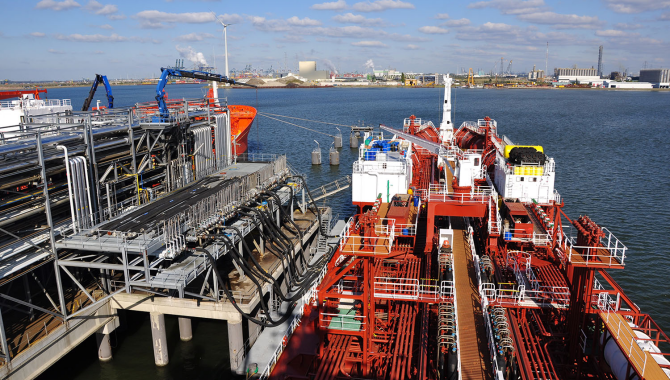At the commencement of loading, and at each change of watch or shift, the Responsible Officer and the Terminal Representative should each confirm that the communications system for the control of loading is understood by the personnel assigned to duties during the cargo operation. During the operation, there should be continuous and direct communication between the terminal and the ship until the operation has been completed and all valves have been closed.
Recommendations
In order to minimize risk of over-pressurization:
·Avoid using tanks that are loaded close to 98% as reception tanks for line clearing. Include a safety margin when estimating required ullages for reception tanks to account for potential inaccuracies in the terminal’s declared “pigging quantities”.
·Consider including provisions for a standby cargo tank to be lined up and ready to be opened should the risk of overfill arise.
·Keep manifold valves closed during idle periods. This will prevent accidental over-pressurization due to shore error.
·Ensure that the vapour return line to shore is open during the operation (when available).
·Monitor the manifold pressure closely and throttle the main manifold valve as required. At the start of the pigging operation, the valve should be opened minimally to control the flow and volume of liquid and propellant gas into the nearly full cargo tank. Gard strongly recommends that only properly trained and experienced personnel are assigned duties related to operation of the ship manifold valves.
·Monitor the available amount of cargo tank ullage space and pressure in the tank. If the volume and/or pressure becomes too high, close the manifold valve, and alert the terminal to stop pigging.
·During freezing weather conditions, inspect tank vents (P/V valves) at regular intervals. Some products will freeze and clog the vents thereby creating pressure.
·Close the manifold valves immediately (in agreement with the terminal) once a pig has reached its receiver/trap to avoid compressed propelling gas entering a loaded cargo tank.
·When loading operations are complete, make sure that the manifold valve is fully closed before starting to clear the shoreline.
·Report immediately to the terminal any abnormalities or deviations from normal procedures.
In short, there are several aspects that can reduce the risk of over-pressurization and overfill during clearing of shore pipelines: Increased awareness, training, careful pre-planning with terminal counterparts, and last but not least, good communication between the ship and terminal personnel.
Source:
Gard
The opinions expressed herein are the author's and not necessarily those of The Xinde Marine News.
Please Contact Us at:
media@xindemarine.com


 Ningbo Containerized Freight Index Weekly Commentar
Ningbo Containerized Freight Index Weekly Commentar  Ningbo Containerized Freight Index Weekly Commentar
Ningbo Containerized Freight Index Weekly Commentar  Ningbo Containerized Freight Index Weekly Commentar
Ningbo Containerized Freight Index Weekly Commentar  BIMCO Shipping Number of the Week: Bulker newbuildi
BIMCO Shipping Number of the Week: Bulker newbuildi  Ningbo Containerized Freight Index Weekly Commentar
Ningbo Containerized Freight Index Weekly Commentar  Ningbo Containerized Freight Index Weekly Commentar
Ningbo Containerized Freight Index Weekly Commentar